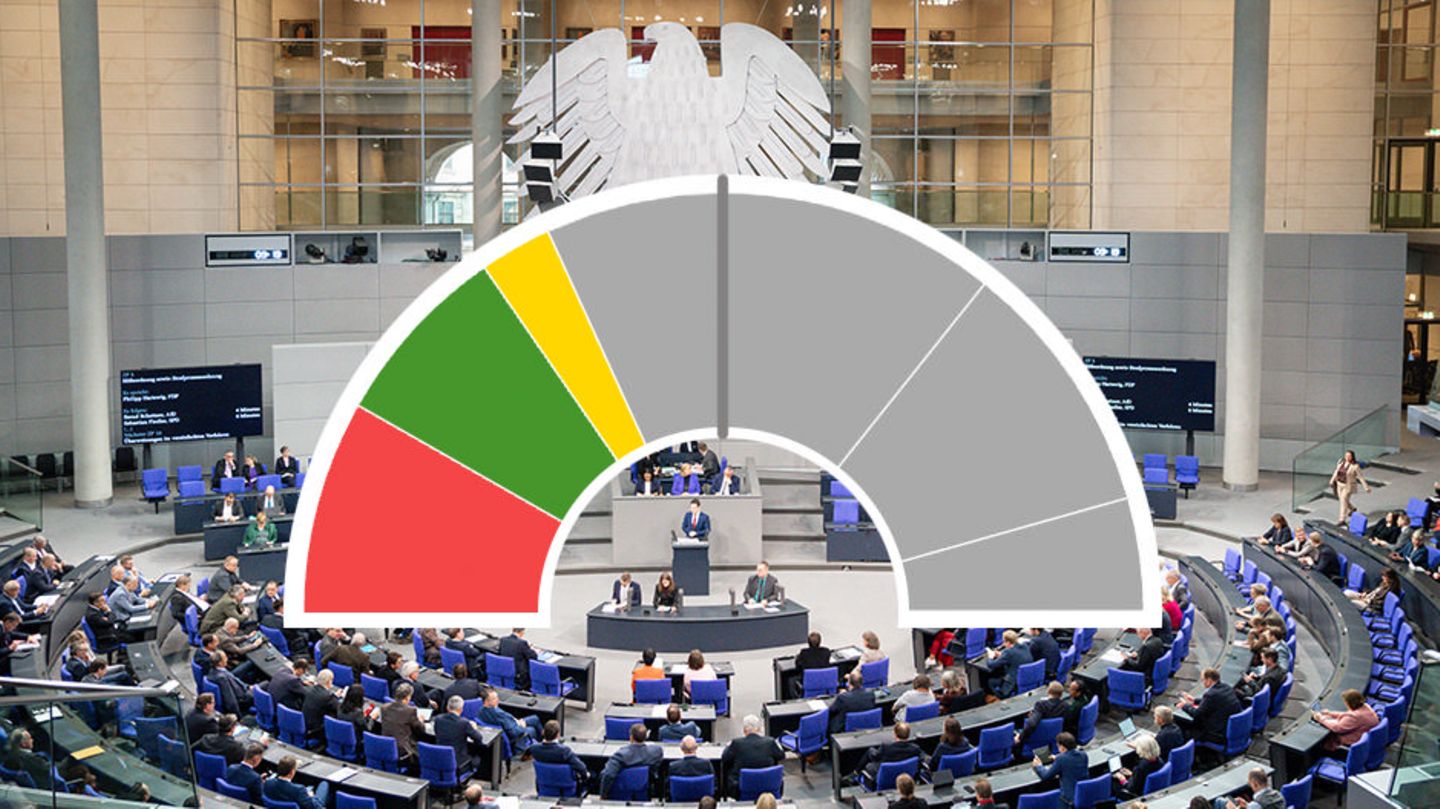Federal election 2025
Coalition calculator: Which alliances have a majority in the polls
Copy the current link
Before the 2025 federal election, there is a lot of speculation about the possible future government alliance. Current surveys show which coalitions could gain a majority.
Which coalition will govern Germany after the early federal elections in 2025? The traffic lights again? After the last disaster, probably not. But what happens instead? Jamaica (black-yellow-green), Kenya (black-red-green) or Blackberry (black-red-purple)? Or will there be another grand coalition, often shortened to “Groko” in common parlance? Many Germans seemed to be tired of the latter after the Merkel era, but at least black and red always somehow stood for a certain stability.
Federal election 2025: surveys and graphics
You can see which alliance would have a majority, at least according to surveys, in the interactive graphic below.
Coalition calculator: Who would have a majority according to surveys
At this point our editorial team has integrated content from dpa infocom.
Due to your privacy settings, this content has not been loaded to protect your privacy.
Note on usage: The graphic shows the results of the regular so-called Sunday question (“Which party would you vote for if there were a federal election next Sunday?”) from various opinion research institutes. The most current survey is preselected. You can choose between the institutes in the menu and show or hide individual parties. The distribution of seats was calculated based on the surveys using the Sainte-Laguë/Schepers method (more on this below)
Overview: Distribution of seats in the future Bundestag according to surveys
At this point our editorial team has integrated content from dpa infocom.
Due to your privacy settings, this content has not been loaded to protect your privacy.
The graphic above shows how the Bundestag would be composed based on the selected survey. The same data is used as the coalition calculator.
Sainte-Laguë/Schepers method for seat calculation
The Sainte-Laguë/Schepers counting procedure has been used since 2009 to determine the distribution of seats after a federal election. First, the number of second votes cast is divided by the total number of seats to be distributed. In this way, a provisional allocation divisor is determined, i.e. the number by which the respective votes of the parties are divided. The results, i.e. the quotients, are rounded to the number of seats. The following applies: If the remainder is more or less than 0.5, the number is rounded up or down. If there is a remainder of exactly 0.5, the lottery will decide again, according to the Bundestag website. The divisor is determined so that the total number of seats corresponds to the total number of mandates to be awarded.
Sources: DPA (graphics),
Source: Stern
I have been working in the news industry for over 6 years, first as a reporter and now as an editor. I have covered politics extensively, and my work has appeared in major newspapers and online news outlets around the world. In addition to my writing, I also contribute regularly to 24 Hours World.




